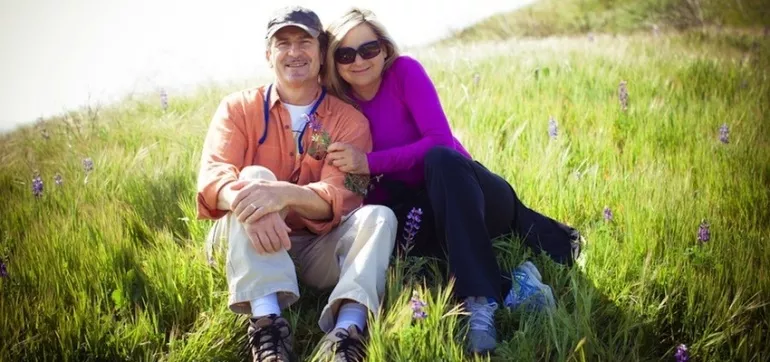
There are constant reminders that the number-one killer worldwide remains a pressing problem despite advances in medical technology. It’s shocking to think that 600,000 people die of heart disease in the U.S. alone, and half of those suddenly, without warning. The statistics are not easy to digest and the faces and pain of many tragedies are hidden.
I sat down for a soy chai latte and a chat this week with Felicia, a heart widow for over a year. Her Valentine died suddenly in California three days after Christmas after jumping on his bike with a smile. He never returned from that bike ride, and efforts to resuscitate him failed.
Felicia’s husband was a 60-year-old executive who ate nearly vegetarian, meditated, practiced yoga, and exercised regularly. He had medical check-ups. An autopsy demonstrated that the major artery feeding his heart was 90% blocked with atherosclerosis. He left behind a widow, two teenage children, many friends, and a lot of pain.
This heartbreaking story can serve as a lesson. How can a husband and wife, both highly educated and involved with their health and medical doctors, suffer such a tragedy?
Any adult may be walking around with arteries loaded with cholesterol plaque that is silent for years until it is so severe that angina, a heart attack or a sudden death occurs. Even a 90% blockage can commonly be silent or have atypical symptoms such as shortness of breath without angina chest pressure. The typical medical exam including routine cholesterol values, ECGs, echocardiograms and even stress tests usually fail to identify heart disease in the silent phase.
I can’t say for certain that after undergoing advanced lab studies (LDL particle number and size, markers of inflammation, tests for genetics like homocysteine, MTHFR and clotting, lipoprotein a, fibrinogen, and ferritin levels) that I would have found one or several defects to treat in Felicia’s husband, but it is likely. When I asked Felicia if there were things she wished had happened differently before her husband pedaled out of this world, she told me the following:
1. I wish I had made him see a cardiologist when he developed exercise-induced wheezing. Be suspicious of any symptoms on exertion.
2. I wish I had known that there is an inexpensive CT scan that can diagnose heart disease at an early stage when no symptoms or stress test will identify the problem.
3. I wish I had kept track of when and if my husband was going to a doctor for his annual physical and what was in the reports. I do it for my kids and the dogs, right? Be a health advocate for ALL your loved ones. Ask questions. Be curious. Be persistent.
4. I wish I had insisted that the doctor who ordered the breathing test my husband passed had followed it up with further cardiac testing.
5. I wish I had known that a crease in an earlobe can be a sign of heart disease, as Dr. Kahn has written about in Reader’s Digest.
In my view, heart attacks are preventable. Heart disease can be identified at its earliest stages and measures can be taken to stop and reverse the process. National heart societies have endorsed a coronary artery calcium CT scan (without IV contrast) as a screening test for persons at risk for heart disease, and the cost is usually under $200 at your local hospital. If you’re concerned about the radiation, although it’s far less exposure than a nuclear stress test or heart catheterization, take an antioxidant vitamin pack 45 minutes before the CT to reduce the DNA risk by 50%. If your score is above zero, find an expert in advanced heart disease detection and reversal. Find out about advanced laboratory profiles widely available to search for common and obscure heart triggers. Know your blood pressure, BMI, and blood sugar and insulin levels. Simple dietary changes, prescription drugs and supplemental therapies like B vitamins can correct many abnormalities.
Although certain preventative measures didn’t protect Felicia’s husband, please remember not to smoke, to eat 6-10 servings of brightly colored organic plants a day, to drink clean water and breathe clean air, to manage stress and anger, to move your body, and to sleep seven hours a night.
The best Valentine’s Day gift is giving yourself and your loved ones the gift of heart health.
Written with Felicia Eisenberg Molnar
Originally posted on MindBodyGreen.com

